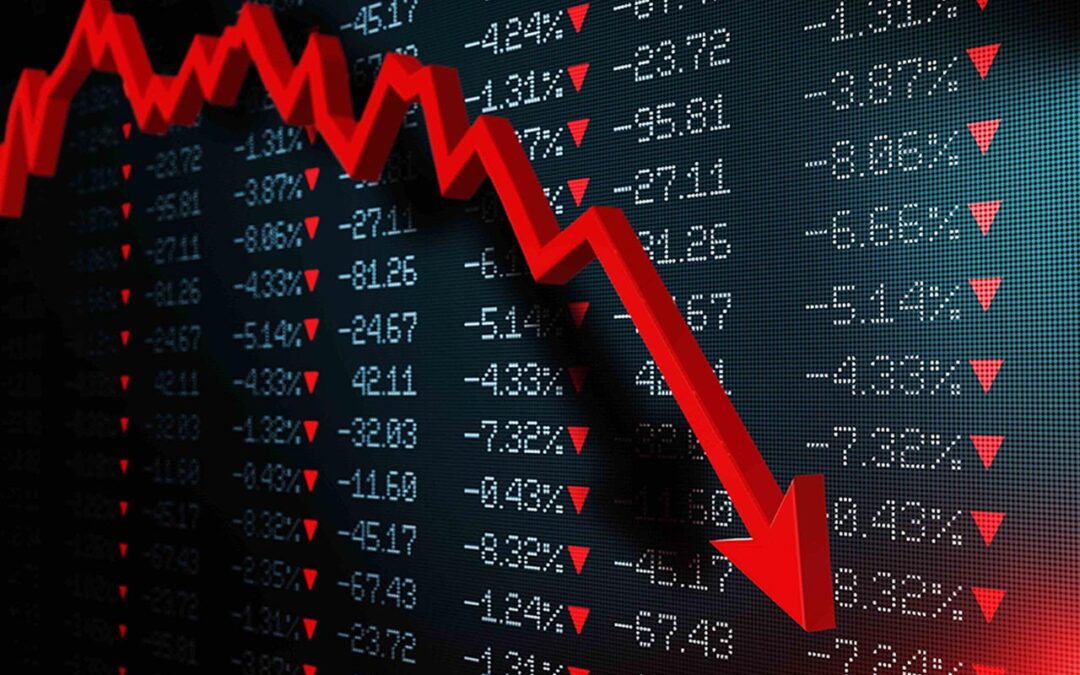The premise of all business is to buy low and sell high. That’s especially true on Wall Street. But how effective, exactly, is buying the dip as a strategy? And what exactly does that mean, anyway?
Pros and Cons of Buying the Dip
PROS:
- Pay Less for Stocks
- Market Dips are Common
- Feel Good About Trading
CONS:
- Hard to Time the Market
- Doesn’t Outpace Dollar Cost Averaging
- It May Not be a Dip
As you probably know, stock prices go up and down. The ups and downs of any given stock price are driven by a multitude of factors, including the stock market itself, buyers and sellers, and the performance of the company that issues the stock.
Strangely, many people exercise the opposite of good business acumen when buying and selling stocks. They buy stocks when the price is up, and sell them when the stock is down. This is mostly because they are taking cues from other participants in the stock market. When stock prices are climbing, they jump on the bandwagon and buy. When stock prices are falling, they think it’s time to abandon ship and unload their shares.
What is Buy the Dip?
As mentioned, buyers and sellers themselves can be a significant force when it comes to market activity. When lots of traders are buying a stock, that drives the price up. When lots of traders are selling a stock, that drives the price down. It’s all part of the law of supply and demand; as more shares are purchased, the remaining shares go up in price because there is only a fixed amount. As more shares are sold, the influx of available shares means that each share is worth less.
Buying the dip is a specific strategy that involves buying a stock when its price is down. Of course, the plan with such a buy is usually to unload the same stock at a higher price later on, whether that time is weeks, days, hours, or even minutes later. If you see phrases like “buy the dip” tossed about with other bits of Wallstreetbets Slang, it probably means the stock going to take a hit.
Pros of Buying the Dip
1. Pay Less for Stocks
The first benefit to buying stock on a price dip is that you are going to pay less for that particular security. As mentioned, the underlying profit principle of any business is buying low and selling high. The bigger the gap between the price you pay and the price you sell is the profit you make—and when stocks dip, you can get a serious discount.
Paying less for stocks is generally a great trading strategy if you are expecting a bull market—meaning, even a long-term investor can become a dip buyer when there is a significant price drop or market dip. It’s for this very reason that an investor might always have some cash reserves on hand—to buy up certain securities in a bear market, and then hold on to those securities long term when paired with the regular, consistent investing they already do. But as it relates to a dip strategy, buying dips is not a long term proposition, it’s just something an investor does until the market reaches new highs again. Then it’s time to sell for profit.
Infinity Investing Workshop
In this FREE workshop you’ll discover how the top 1% use little-known “compounders” to grow & protect their reserves. This plan isn’t some get-rich-quick vision board. It’s an actionable guide, simplifying the very same processes used by many of the most successful people.
Your path to financial freedom starts here.
2. Market Dips are Common
The dip strategy of buying securities that have dropped below their average price is one that can be leveraged all the time because the stock market always has volatility. Even if things are relatively more stable in certain periods, there will always be ups and downs. If the ups and downs are not a significant amount, dip buying as a short term investment strategy can still generate money if done in volume.
You don’t need a well-known Blue Chip Company to drop 33 percent in order to make a profit. You just need to find a few stocks in your lineup that move around $1 here, $2 there, and trade them in volume.
For example, if there’s a particular security you’ve become fond of due to its volatility, and it dips below $3, you could buy a few hundred or thousand shares, and then resell the stock when it bounces back to $4, netting a solid profit of several hundred or several thousand dollars.
3. Feel Good about Trading
It’s no lie to say that if you successfully catch a dip and turn it into profit, you’re going to feel as good as a surfer who has caught an awesome wave and ridden it back to shore. Buying on the dip and selling when the stock goes up again is going to feel great, whether you’re selling stocks or trading on the crypto market.
Sometimes you can use that positive feeling as motivation to learn more about the stock trading world. There are plenty of books and podcasts to consider, including our own Infinity Investing: How the Rich Get Richer and How You Can Do the Same. Download the first chapter today!
Cons of Buying the Dip
While there are some benefits to buying the dip, there are also some serious drawbacks that must be considered, including:
1. Hard to Time the Market
Many retail investors and amateur traders do not understand the difference between gambling vs investing. Or rather, they think they do. But they are missing a key component to capitalizing on the price swings of the stock market. Making money off price swings is often not about the underlying company that issues the stock. It’s more often than not about data patterns, which are impossible to analyze without a nuanced understanding of how to read indicators, like a candlestick chart, or the assistance of computer-based analytics that can take complex algorithmic data and predict the future with greater accuracy.
If neither of those tools are at your disposal, you may have a better chance of making money playing blackjack than trying to profit by buying the dip. Recall in the previous section that dip buying as a strategy doesn’t need to rely on huge dips. You just need the stock to show a little bit of market volatility and then buy in volume. However, without the technical analysis done on the financial market and individual stocks, this kind of stock buying is not a good strategy.
2. Doesn’t Outpace Dollar Cost Averaging
Many investors, especially retail investors and amateur traders, drive themselves crazy thinking about the ups and downs of the stock market. You might be surprised to learn that roughly 80 percent of people day trading lose money, while 10 percent of day traders break even. Only 10 percent of professional day traders actually make a profit.
The best bet for someone with money they want to grow is to follow a strategy called dollar cost averaging, which is used by the likes of investors like Warren Buffet. Dollar cost averaging means that you just put the same amount of money into long term investments on a periodic basis with consistency; never deviating from the timing or amount because of or despite market activity. Over time, you will see an excellent return on your money, even if the market does go up and down during shorter periods.
For example, according to some estimates, the total stock market return over the last 20 years has been 7.54 percent (or a little over 5 percent when accounting for inflation). Getting more than 7 percent on your money as an investor is not a bad return. It’s even better if you pick winning stocks that show strong returns and pay healthy dividends because that average number is also factoring in other securities that don’t perform as well.
Investors who rely on dollar cost averaging also frequently make use of something called value investing, which means that they invest consistently in stocks that have a low price to earnings ratios. In other words, the amount of money you need to put into a owning a security versus how much it pays out (in growth and/or dividends).
Playing the game of attempting to buy on dips, for most investors or traders, does not pay off in the long run; at least not as consistent dollar cost averaging on value stocks does. If you don’t believe us, just ask Warren Buffet.
3. It May Not be a Dip
As it turns out, a decrease in stock price may not be a dip after all. The stock price may continue to go down, which means that you actually lose money (unless, of course, the price bounces back). A stock dip may be due to more than market factors that can be analyzed with an algorithm. It may be because something happened to the company or its marketplace. In this case, there will be a bearish perspective on the stock that goes far beyond a temporary drop in price.
If you are trading on margin (that means, essentially, investing with borrowed money), this decrease in price can have disastrous consequences; unless, of course, you have hedged your bets with an options contract, giving you the right (but not forcing you) to buy the dip.
Buying the Dip Works, But It’s Not as Effective as Other Strategies
Buying the dip is not a good strategy for the average retail investor, especially if they’re taking investment advice from the latest memes on Reddit. Dollar cost averaging is a far better strategy for someone with extra money to invest, and it’s often as simple as telling your company’s HR department to invest five percent of your paycheck (or whatever your company match offers). It’s not as exciting as buying the dip and having your “stonk go to the moon,” but it works a lot better over time for more than 90 percent of investors.
Learn more about solid investing strategies with stocks, real estate, cryptocurrency, and other asset classes with a free Infinity Investing membership. Sign up today to start your path to financial freedom.
Bonus Video
Infinity Investing Workshop
In this FREE workshop you’ll discover how the top 1% use little-known “compounders” to grow & protect their reserves. This plan isn’t some get-rich-quick vision board. It’s an actionable guide, simplifying the very same processes used by many of the most successful people.
Your path to financial freedom starts here.

